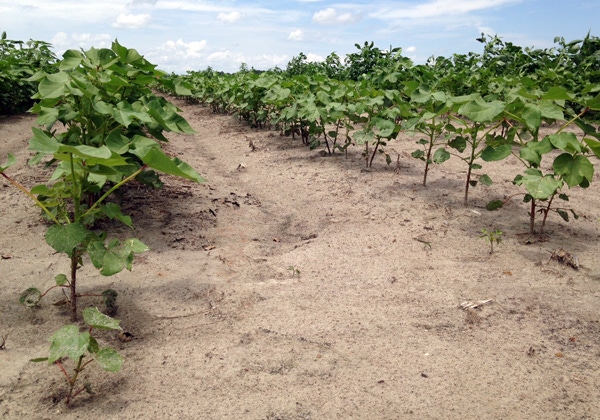
North Carolina now has neonicotinoid-resistant thrips; not a good thing for cotton producers in the state, said Dominic Reisig, North Carolina State University Extension entomologist.

North Carolina State University Extension Entomologist Dominic Reisig recommends cotton producers use an insecticidal seed treatment with an additional foliar spray or Orthene or an Admire Pro in-furrow seed treatment to control thrips.
“We don’t know a lot about this resistance, but we know that in some locations thrips are only thiamethoxam-resistant and in some locations they’re only imidacloprid-resistant. And in some locations there is resistance to both so I cannot predict on your farm which seed treatment is going to look better or worse. But what I think I can tell you is that thiamethoxam seems to be looking worse than imidacloprid n terms of field performance,” Reisig said at the 2015 Blackland Cotton Production meeting Feb. 13 in Belhaven, N.C.
“There aren’t a whole lot of options out there,” Reisig added. “If you use untreated seed, my recommendation is to spray the day it cracks the ground with Orthene and keep spraying on a weekly basis. You could also place Orthene in the furrow or plant with Thimet. I don’t particularly like these options, using broad spectrum insecticides. They work well some times but not all the time.”
North Carolina State is recommending cotton producers use an insecticidal seed treatment with an additional foliar spray or Orthene or an Admire Pro in-furrow seed treatment for thrips control, Reisig said.
In the meantime, the brown marmorated stink bug has become a huge problem in North Carolina. There are reports on the brown marmorated stink bug showing up in cotton fields in Cleveland and Stanly Counties, Reisig said, pointing out that the pest seems to be more of a problem in the Piedmont rather than the Blacklands.
Reisig said the brown marmorated stink bug is worrisome because nymphs can feed on large mature bolls and cause a lot of damage. Small, quarter-sized bolls can be susceptible to damage. “That’s why we tell you focus your sprays on the second, third and fourth week of growth because that’s when you have a lot of those small susceptible bolls. This insect will continue to feed until the cotton is mature,” Reisig said.
In his comments, Reisig stressed the importance of scouting for plant bugs. “If you want to manage plant bugs, you have to look for plant bugs,” he said. He recommends two types of scouting programs: pre-bloom and post-bloom.
“In pre-bloom you have to do two things. No. 1 is you have to look for the insect in your field. In my mind there is no other way to do this than using a sweep net,” he advised. “You need to couple that with square retention counts. With square retention counts, you go to the top of the plant, look for squares that are either missing, blasted, flared or dirty, which are indications that plant bugs are there. If your square retention drops below 80 percent, and you have plant bugs at those threshold levels, you need to spray.”
Later on in the season, in post-bloom inspections, farmers should use a black drop cloth which is helpful because the nymphs show up well against the black background. “When you have two to three nymphs per drop cloth sample, we recommend a spray,” Reisig said.
About the Author(s)
You May Also Like






